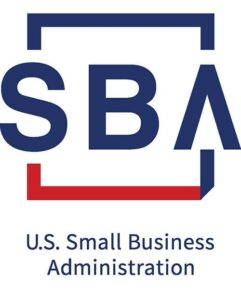
INTERNATIONAL LOGISTICS HUB AND CROSSROADS FOR TRADE WITH EUROPE AND BEYOND
The Netherlands and Belgium are home to Europe’s two largest ports, Rotterdam and Antwerp. A crossroads for trade since ancient times, this region remains a logistical hub today, with much of the trade into and out of Europe passing through the region.
The Netherlands is an ideal starting point for companies that are new to exporting and are seeking their first European distributor. With an affluent, U.S.-friendly population that has a high regard for U.S. products and the highest level of English fluency on the continent, the Netherlands has the most advanced logistics and distribution network in Europe, with strong links to the rest of Europe and beyond.
Home to the headquarters of both NATO and the EU, Belgium is considered to be a leading test market for Europe, since it has two distinct sociodemographic groups (the Dutch-speaking Flemish and the French-speaking Walloons). Within a radius of 300 miles, 140 million EU consumers can be reached, representing 60% of Europe’s purchasing power. Furthermore, Belgium is known for its high level of productivity due to strong investment in the labor force.
To help Wisconsin exporters grow their exports to these markets and beyond, the Wisconsin Economic Development Corporation (WEDC) will be leading a Global Trade Venture to the Netherlands and Belgium in September 2023, with segments in Amsterdam and Brussels.
In addition to having your appointments arranged for you and potential business partners identified, each participant in the Global Trade Venture will also receive a market assessment for the Netherlands and Belgium specific to your company, detailing considerations to keep in mind when introducing your product or service into these markets. WEDC has eyes and ears on the ground in Europe, in the form of Wisconsin’s authorized trade representative—thus making it easier for Wisconsin companies to find partners they can trust and taking some of the guesswork out of launching in a new market. With all your appointments arranged for you, you can focus on business rather than logistics and scheduling.
REGIONAL OUTLOOK
Belgium placed among the top 10 destinations for Wisconsin exports in 2021, with the Netherlands ranking #11—and, when treated as single market, the region purchases more Wisconsin exports than Germany, Wisconsin’s fourth-highest export destination. As trade tensions and volatility afflict other world regions, this creates increased demand for exports from stable and reliable sources such as Wisconsin.
Wisconsin has both historic cultural ties to the region (due to immigration) and present-day commonalities. For example, agricultural technology is an important focus across the region, and Belgium occupies a similar role in the manufacturing ecosystem as Wisconsin, serving as a second- or third-tier supplier—meaning that Wisconsin companies may find a natural entry point to the European manufacturing supply chain in Belgium.
This region can serve as a gateway to Europe—a relatively straightforward place to learn the regulatory and compliance requirements and procedures that will apply throughout the region. Recent geopolitical trends have made the Netherlands and Belgium relatively well-positioned for stability and growth. They are less affected by supply chain issues due to their proximity to ports, and they get their energy from Scandinavia rather than Russia, thus avoiding the price increases some other markets have seen due to rising energy costs.
EXCLUSIVE ACCESS
The Netherlands is the world’s second-largest exporter, after the U.S., for food products. In addition, the U.S. is the sixth-largest supplier for the Netherlands’ agricultural imports—many of which are re-exported directly or after adding value through mixing, repacking or processing. Growth in agricultural imports is being driven by categories including food preparations, beef, processed vegetables, distilled spirits, bakery goods, wine, and sauces and condiments. Wisconsin and the Netherlands also share a focus on water technology, with water management and shipbuilding shaping the Dutch national identity.
The top U.S. exports to Belgium include chemicals and petrochemicals, as well as plastics and machinery. A sector of particular opportunity is medical equipment, where Belgium produces only 10% of what it consumes, leaving the market open to heavy competition among import sources. The U.S. provides just over one-quarter of these imports, and U.S. suppliers dominate the subsectors of diagnostic imaging apparatus, orthopedic and implantable products, and medical and surgical instruments. The Belgian market for medical equipment and supplies is estimated at $2.8 billion in 2020, and over the past five years has seen an average annual growth rate of 4%. The Belgian social security system, which includes the health care system is considered among the most extensive and efficient in Europe, and covers nearly 100% of the country’s population of 11 million.
Companies in the following industries are especially encouraged to consider attending this Global Trade Venture:
- Aerospace and defense
- Agricultural technology
- Chemicals and plastics
- Cybersecurity
- Energy, power and controls
- Information technology
- Manufacturing components
- Medical devices
- Safety and security
- Water technology

